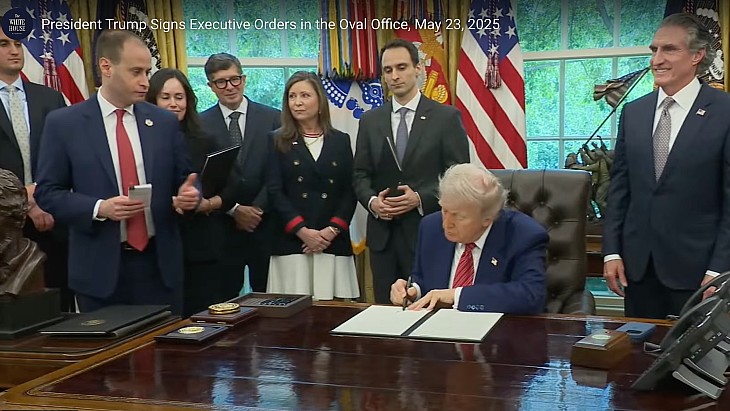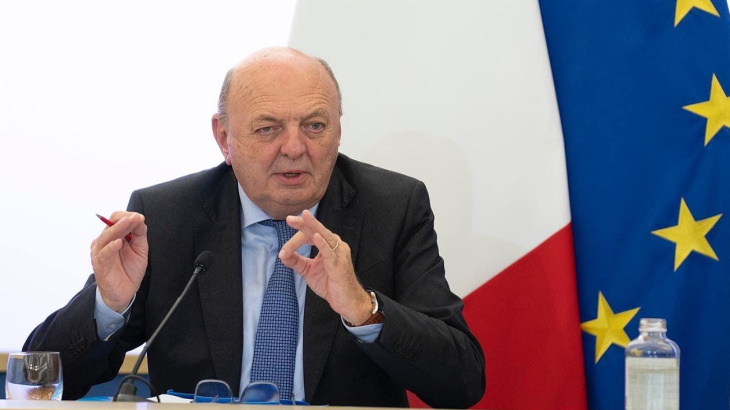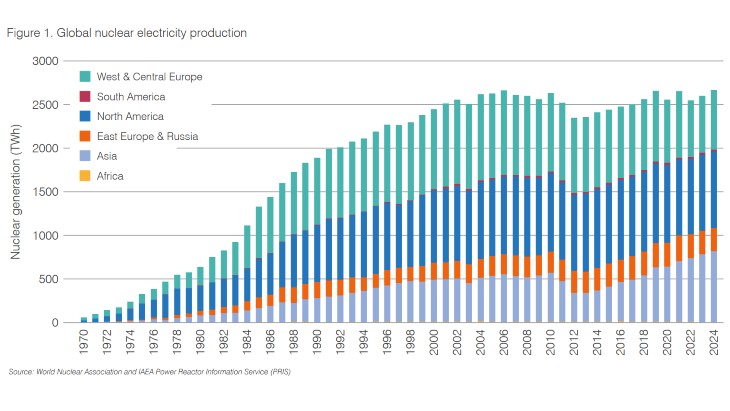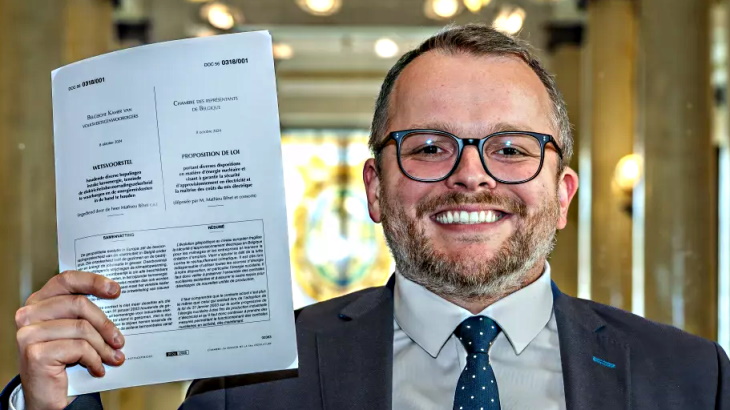A consultative body of the European Union has called for the European Commission to adopt a "more comprehensive" nuclear strategy. The European Economic and Social Committee (EESC) says the commission should highlight nuclear energy's positive attributes.
The European Commission is mandated by the Euratom Treaty to periodically issue a new Nuclear Illustrative Program (PINC) to indicate targets and a program for nuclear production and the corresponding investment required. The Commission issued its latest PINC in April this year.
According to the EC, there are currently 129 nuclear power reactors in operation in the EU with a combined generating capacity of 120 GWe. Together they provide 27% of the bloc's electricity.
However, the Commission forecasts that there will be a decline in EU nuclear capacity up to 2025 due to ageing reactors being retired and some member states ending or reducing their reliance on nuclear energy. With new reactors starting up and lifetime extensions of existing reactors, this trend is expected to be reversed by 2030. Nuclear capacity is likely to remain between 95 and 105 GWe by 2050, when it will account for about 20% of the EU's electricity production.
Around 90% of the EU's existing reactors would be shut down by 2030 without long-term operation programs, resulting in the need to replace large amounts of capacity, the EC said.
Having reviewed the PINC, the EESC says it is calling for "substantial revisions to the communication notably to include sections on the competitiveness of nuclear power, related economic aspects, its contribution to security of supply, climate change and carbon targets, and public acceptability, liability for nuclear damages, transparency, and effective national dialogue."
The committee also suggests the Commission "takes this opportunity to propose in the PINC a clear analytical process and methodology offering a consistent, voluntary framework for nation decision-making about the role - if any - of nuclear power in the energy mix." It says priority should be given to improving national coordination between EU member states, improving cooperation between stakeholders, as well as greater transparency and public participation in nuclear issues.
"The wide variation across the EU on public attitudes to nuclear power is a little understood reality with significant effects on political acceptability," the EESC said.
"The European Commission's proposal does not offer a clear and comprehensive approach to the future of nuclear power in Europe," deplores EESC rapporteur Brian Curtis. "The recent Hinkley Point controversy shows it again: after the Fukushima catastrophe, our citizens rightly demand long-term planning for nuclear energy. Today's EESC opinion aims at re-balancing perspectives on the European energy mix which will ultimately help deliver on the Energy Union commitments."
The EESC raises a number of "major uncertainties", including the extent to which the Paris Agreement on climate change will be implemented; the volatility of the international market in fossil fuels; the rate at which new technologies will be applied; and even which countries will be in the EU. It also says it is uncertain how much influence the global economic outlook will have on the EU and how much of the investment required in the whole energy chain will be forthcoming.
The committee's recommendations will be presented by Pierre-Jean Coulon, president of its energy and transport section, to the European Nuclear Energy Forum Plenary meeting in Bratislava in early October.
Coulon said, "I will bring to the attention to Europe's decision-makers these concrete ideas from civil society, and I will insist on the vital role of public understanding of the energy 'dilemma'. Indeed, we are faced with sometimes conflicting objectives of energy security, affordability and environmental sustainability. But we have to embrace these aspects to shape a solid energy policy equipped to face the challenges of our future. Transition means time."
Researched and written
by World Nuclear News












